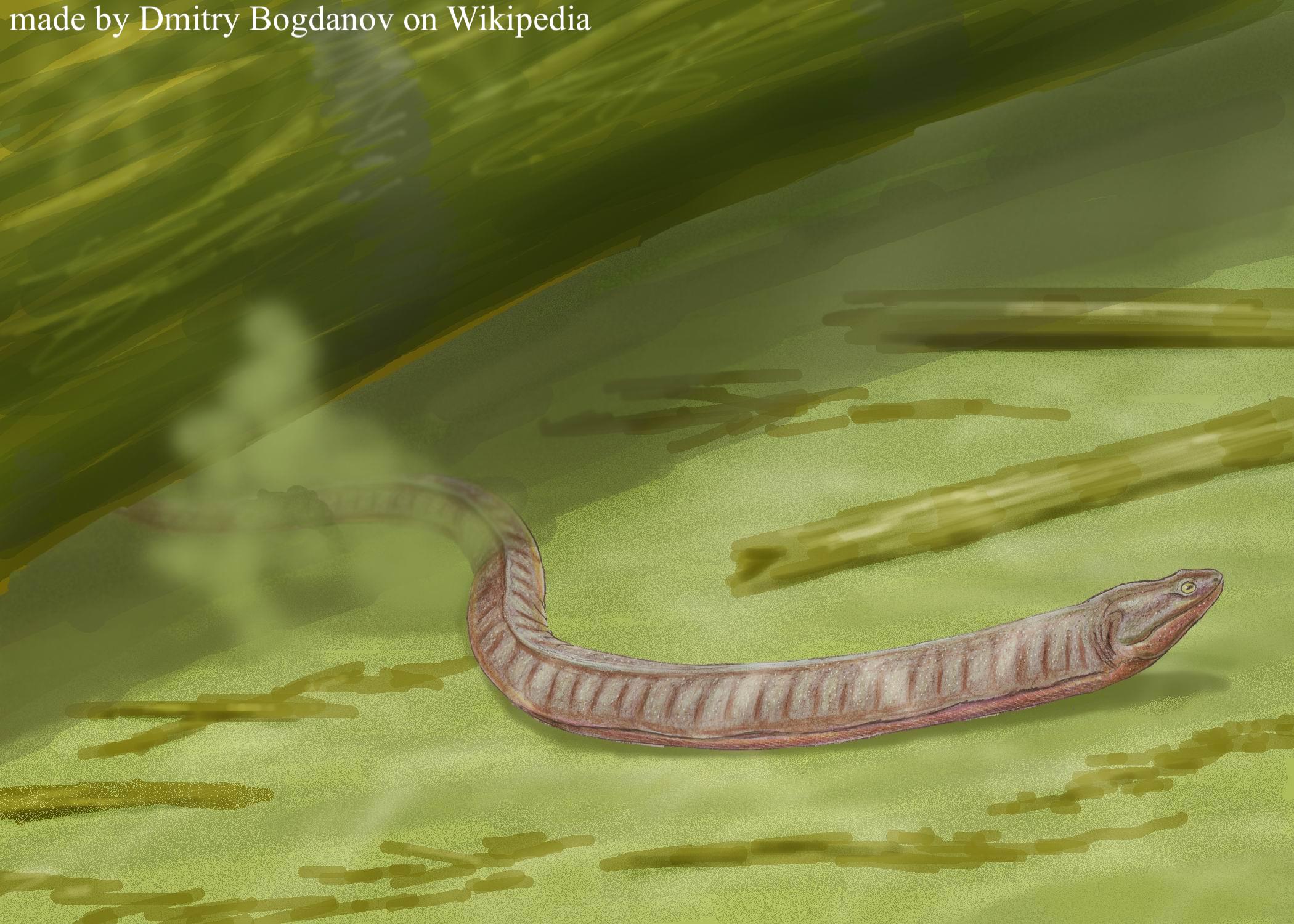Welcome to Adelospondylus

Name Definition
Obscure vertebra
Name Given By
Robert L. Carroll in 1967
Location
Burghlee/Rumbles Ironstone of Scotland, United Kingdom
Classification
Stegocephalia, Adelospondyli, Adelogyrinidae
Size
total body length is unknown, but the skull is around 5 cm long
Temporal Range
Serpukhovian - Bashkirian of the mid-Carboniferous, around 326.4 - 318.1 million years ago
Ecological niche
possibly a small aquatic insectivore
Species/Sub Species
A. watsoni
Diet
possibly consumed insects or some other kind of small invertebrate
Introduction
Adelospondylus is a genus of adelospondyl amphibians that lived in Scotland around the middle of the Carboniferous period. Adelospondylus means “obscure vertebra” which probably refers to the fact that there are no vertebral elements known from Adelospondylus, and only a skull and a pair of mandibles have been attributed to Adelospondylus.
Some differentiating features of the skull from Adelospondylus include a ventrally convex jawline (a jawline that is protruding from the bottom), a small orbit (the bone cavities in the skull that houses the two eyes), an elongated postorbital portion of the skull (the postorbital is the band of bone that is right behind the orbit), the squamosal suture (the suture that separates the squamous temporal bone which is the front of your temple and the parietal bone which takes up a majority of the back of your head) was moved to the back of the top of the jaw joint, the maxilla was not shifted anteriorly (to the front), the jugal (the jugal is the bone right under your eye socket) and the postorbital are fused, its lower jaw is noted as being quite deep, and a view from the top of Adelospondylus’s skull shows it is triangular in shape. While the skull is only known from this genus, it is thought that Adelospondylus was superficially similar to snakes in body shape because it is commonly seen in many other adelospondylans which is the taxonomic order it is currently housed in. Adelospondylus may also have had reduced limbs or they may have been absent from the body.